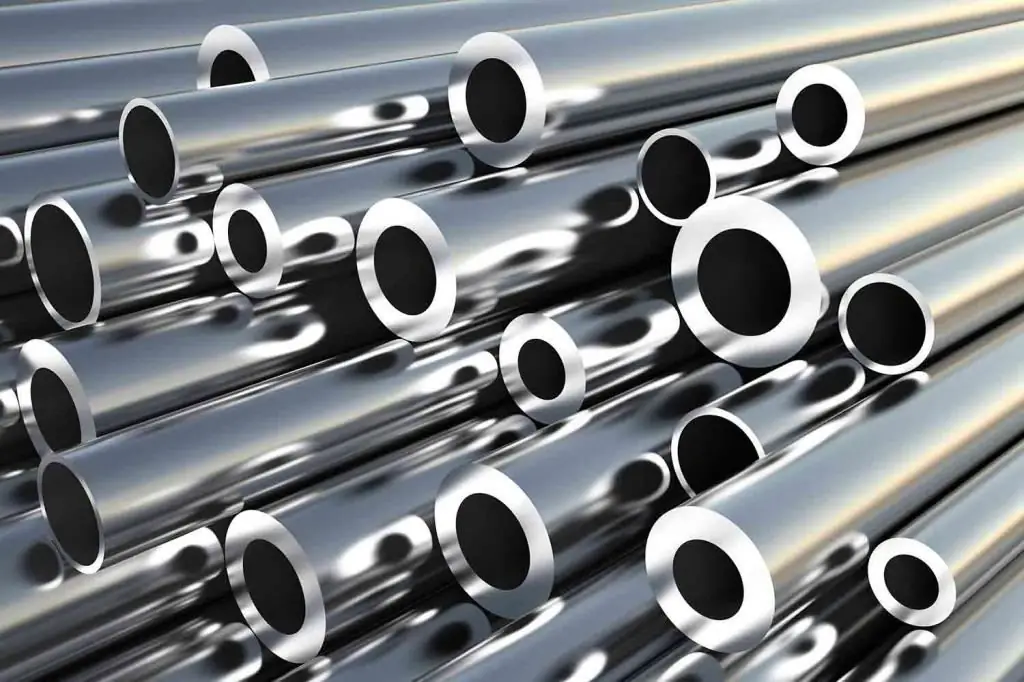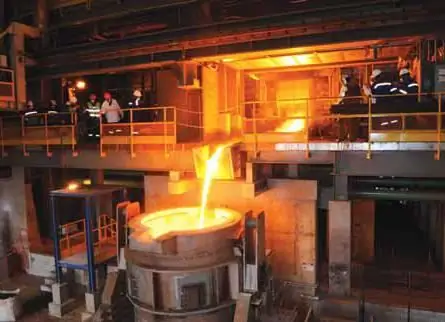2026 Author: Howard Calhoun | [email protected]. Last modified: 2025-01-24 13:10:29
Many people know about bronze only that sculptures and monuments are cast from it. In fact, this metal is undeservedly deprived of popular attention. After all, it was not in vain that in the history of mankind there was even a Bronze Age - a whole era during which the alloy occupied a dominant position. It is one of the few materials used in both industry and art. The qualities possessed by an alloy of copper and tin are simply indispensable in many industries. It is used in the manufacture of tools, in mechanical engineering, casting church bells, and so on. At the same time, today there are a large number of metal grades, each of which has certain, pre-modeled properties.

The use of bronze in the past
The first mention of an alloy of copper and tin dates back to the 4th millennium BC. This technological breakthroughhistorians believe, allowed the civilization of Mesopotamia to take a leading position at that time. Archaeological excavations carried out in southern Iran testify to the widespread use of bronze for the manufacture of arrowheads, daggers, spears, axes, and swords. Among the finds there are even interior items, such as furniture and mirrors, as well as jugs, amphoras, vases and plates. The same alloy was used to mint ancient coins and make jewelry.
Bronze in the Middle Ages begins to be actively used in Europe. Such massive objects as cannons and church domes are made from it. In a later period, with the development of mechanical engineering, such a versatile metal also did not go unnoticed. It was appreciated mainly for its anti-friction and anti-corrosion properties. At the same time, it should be noted that the material used earlier was somewhat different from that which bronze is today. The composition of the alloy contained many minor impurities, significantly degrading its quality.

Chemical composition of modern bronze
Today, in materials science, bronze is an alloy of two metals: copper and tin, which can be used in a variety of proportions. To give the metal the desired qualities, zinc, phosphorus, magnesium, lead and silicon can be added to this pair. The presence of random impurities with the help of modern technologies is practically reduced to zero.
In most cases, the ratio of copper to tin in proportions of 85 to 15 percent is considered acceptable. share reductionthe second component below the indicated mark gives rise to a number of problems, the main of which is segregation. This term is used by metallurgists to refer to the process of alloy delamination and its uneven solidification.
Influence of alloy color on its quality
Informed people can learn a lot about a material just by looking at the color that bronze has. The composition directly affects this parameter. As you might guess, copper gives the alloy a red tint. Therefore, reducing its percentage in favor of other components will mean a gradual transition of color to dimmer tones.

With the usual balance of components (85% copper), bronze casts yellow. This is the most common variety to be found. A white alloy is obtained after adjusting the ratio to a ratio of 50:50. But in order for bronze to turn gray, it is necessary to reduce the amount of copper to 35%.
As for the change in the practical characteristics of the alloy when experimenting with its composition, the situation is as follows. The ductility of the material will directly depend on the content of tin in it. The smaller it is, the more malleable the bronze will be, but this statement is true only up to a certain limit. So, when the 50% mark is reached, the alloy becomes soft again.
Bronze in art
Strong and durable material, while having a fairly low melting point and good ductility, could not but interest creative people, in particular sculptors. Already in the V-IV centuries BC in Greece, it was worked out to the smallest detailthe technology of making bronze statues, which is still relevant today.

It consists in the fact that the statue of fire-resistant material is initially replaced by wax, which is destroyed directly during casting. To do this, according to the drawing, a plaster model must first be made, and then a mold for casting. The wax content simply melts when exposed to temperature, and bronze takes its place, which cools and hardens. After that, it remains only to process and bring to perfection.
Artillery metal
For the manufacture of cannons, and later other military equipment, bronze has always been used. The composition of the alloy that is used for these purposes, as a rule, contains 90% copper and only 10% tin.

This is due to the fact that the material for the tools must be very strong and have high tear resistance. The brand of bronze BrAZhMts10-3-1.5 possesses such qualities. In addition to the main components, it contains 1-2% manganese, which improves anti-friction and temperature characteristics.
Church bell making
The ringing of bells must be melodic, and its sound must please the ear at a great distance. Oddly enough, but bronze has such musical talents. To improve the sound of the bell, it is made from an alloy with a high content of tin (from 20 to 22%). Sometimes some silver is also added to it. Brands of bronze, which are used in the manufacture of bells and other percussion instruments,are completely unsuitable for practical use in other industries. This is due to the fact that such an alloy has a fine-grained structure and increased brittleness.

Phosphorus and aluminum bronze
The first alloy consisting of 90% copper, 9% tin and 1% phosphorus was used by Künzel in 1871. It was called phosphor bronze, and the material has found its application mainly in mechanical engineering. Various machine parts are cast from it, which are subject to increased friction. Phosphorus is necessary to increase elasticity and improve anti-corrosion properties. The main advantage of this metal is that it perfectly fills any recesses during casting.
Aluminum bronze, the composition of which is characterized by a high content of copper (up to 95%), is very similar in appearance to gold. In addition to beauty, it has a number of other undeniable advantages. For example, adding 5% aluminum allows the alloy to withstand long-term exposure to aggressive environments such as high acidity.
As a material for the manufacture of various machine parts, this metal has almost universally replaced phosphor bronze in paper mills and gunpowder production due to its higher tear resistance.
Silicon and manganese bronze
Silicon is added to the alloy to increase electrical conductivity. This quality is used in the production of telephone wires. The reference composition of silicon bronze is as follows: 97.12% copper, 1.14% tin, 0.05% silicon.
The most difficultthe production process boasts an alloy containing manganese. The whole procedure takes place in several stages. First, ferromangan is added to molten copper. Then, having maintained the specified temperature regime, tin is added, and if necessary, zinc. The English firm Bronce Company manufactures several grades of manganese bronze with different viscosity and hardness. Such an alloy can be used in almost all industries.
Recommended:
Bronze - melting point. How bronze items are made

The article talks about bronze, its classification, the method of melting and the manufacture of products from this alloy
Alloy is a homogeneous composite material. Alloy properties

Everyone has heard the word "alloy", and some consider it synonymous with the term "metal". But these concepts are different. Metals are a group of characteristic chemical elements, while an alloy is a product of their combination. In its pure form, metals are practically not used, moreover, they are difficult to obtain in their pure form. While alloys are ubiquitous
What are chemical reactors? Types of chemical reactors

Chemical reactors are containers designed to carry out reactions in order to produce the final product. Their design depends on various factors and should provide maximum output in the most cost effective way
What is chemical metallization? Do-it-yourself chemical metallization

Chemical plating is a process called chromium plating. It is based on the reaction of the silver mirror. This effect allows you to achieve a brilliant coating on the surface of the product
Alloy AD31T: characteristics, composition, application

Currently, people use many different alloys from a wide variety of materials. All of them have their own parameters and are used in different industries. It is worth considering the characteristics of AD31T1, since this material has become quite popular in certain areas

